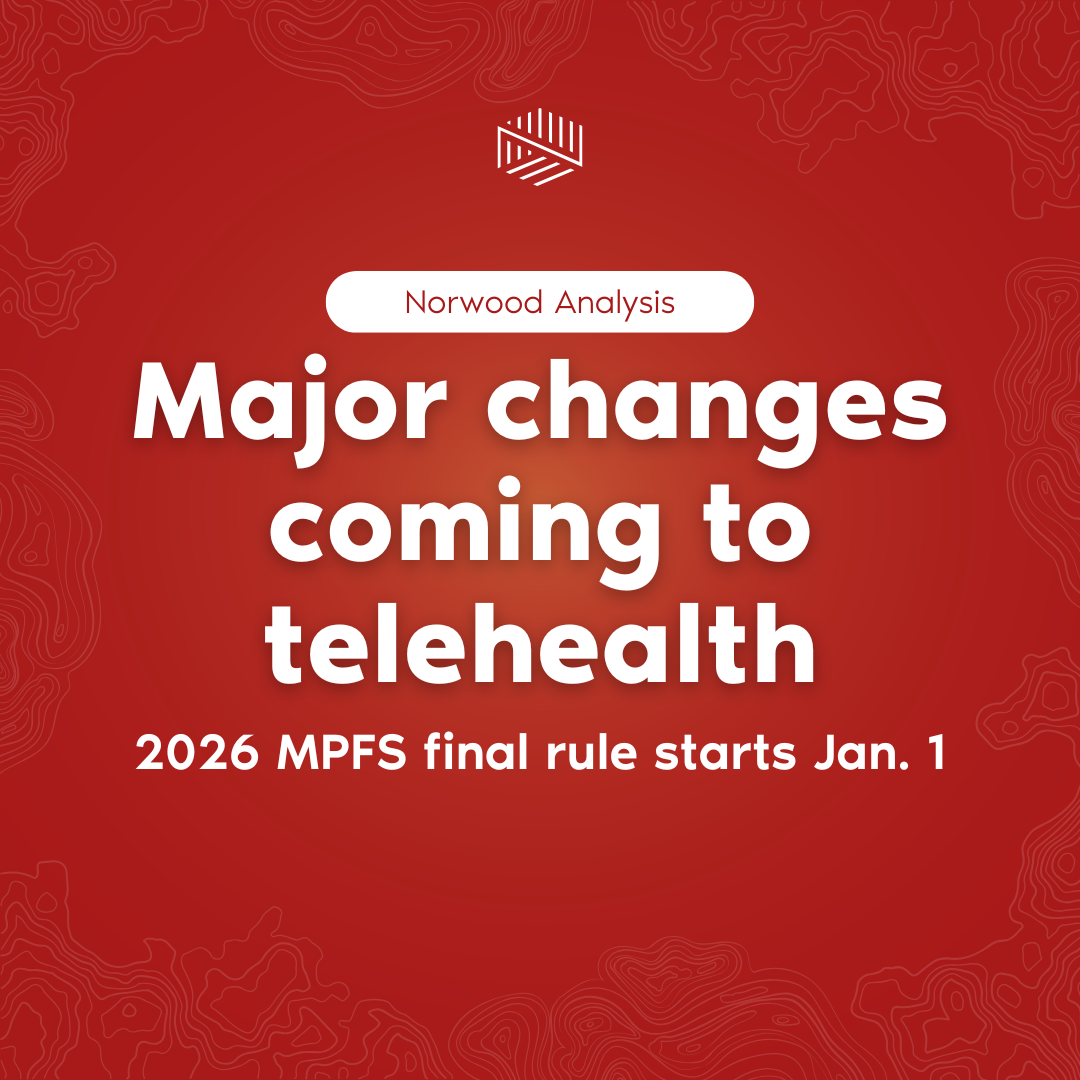Telehealth requirements loosened, one of many changes in 2026 MPFS final rule

By Brian Murphy
Sizable changes are coming Jan. 1 to telehealth, chronic illness and behavioral health management and reimbursement, and physician payment formulas per the recently released 2026 Medicare physician fee schedule final rule.
I’ve summarized a few I find interesting.
Telehealth commitment. I’m most excited about these changes. In a long overdue move CMS is easing administrative burden and taking steps to make telehealth services financially viable. The list includes:
- Removing the distinction between provisional and permanent services, which until very recently resulted in a massive disruption due to the ongoing government shutdown—payments for the former are currently on hold.
- Simplifying the review process for determining whether a service can be furnished with an interactive, two-way audio-video telecommunications system
- Removing frequency limitations for subsequent inpatient visits, subsequent nursing facility visits, and critical care consultations.
- Loosening old school direct, at the elbow incident-to requirements; the rule allows a physician or supervising practitioner to provide “incident-to” supervision through real-time audio and visual interactive telecommunications (excluding audio-only). Note that there are some excluded surgical services.
New add-on codes for behavioral health and psychiatric services. CMS finalized optional add-on codes for Advanced Primary Care Management (APCM) services, which can be separately billed when an APCM base code is reported by the same practitioner in the same month. These include HCPCS codes G0568, G0569, and G0570—see pp. 425-427 for full code descriptors. CMS is also expanding payment policies for digital mental health services to include payment for devices used in the treatment of ADHD.
Awarding APM participation. CMS is incentivizing alternative payment model (APM) participation through a reimbursement bonus. The dollars are quite minimal (3.77% payment increase for APM participants vs. 3.26% for other providers), but what is important is 2026 marks the first year of two separate conversion factors. We should anticipate the payment disparity will only continue to grow—leaving non APM participants further behind.
Implementing a new Ambulatory Specialty Model (ASM), a mandatory alternative payment model with 5 performance years that runs from Jan. 1, 2027, through Dec. 31, 2031. This requires its own explanation; see link below.
Accounting for efficiency and location. In a wildly unpopular move CMS is implementing a blanket -2.5% efficiency adjustment, arguing that physicians have gotten more efficient with procedures, scheduling, etc., and RVU calculations have not kept up. Per CMS: “Time assumptions built into the valuation of many PFS services are, as a result, very likely overinflated.” Note that some codes are exempt from this adjustment. CMS also finalized a change to the accounting of indirect practice expenses which lowers the amount facility-based physicians are paid for administrative expenses.
Per Fierce Healthcare the American Medical Association (AMA) decried the cuts, stating that the policies will “directly undercut private practice viability … AMA says the policies are estimated to result in 37% of oncologists facing cuts between 10-20%.”
References
- CMS, MPFS 2026 final rule summary: https://www.cms.gov/newsroom/fact-sheets/calendar-year-cy-2026-medicare-physician-fee-schedule-final-rule-cms-1832-f
- Fierce Healthcare, CMS finalizes increased pay rates for physicians in 2026, but hospital docs could lose out: https://www.fiercehealthcare.com/regulatory/cms-finalizes-increased-pay-rates-physicians-2026-hospital-docs-could-lose-out
- CMS, Ambulatory Specialty Model: https://www.cms.gov/priorities/innovation/innovation-models/asm
Related News & Insights
Documentation with a Pulse: Erin Kreider on ethics, CDI advocacy, and ambient listening
Listen to the episode here. Erin Kreider gives me hope for the future of the CDI profession….
Blue Cross Blue Shield of Massachusetts to downcode high level E/M codes for outlier providers
By Brian Murphy We’ve got another blanket E/M downcoding policy set to take place on Monday, just…


